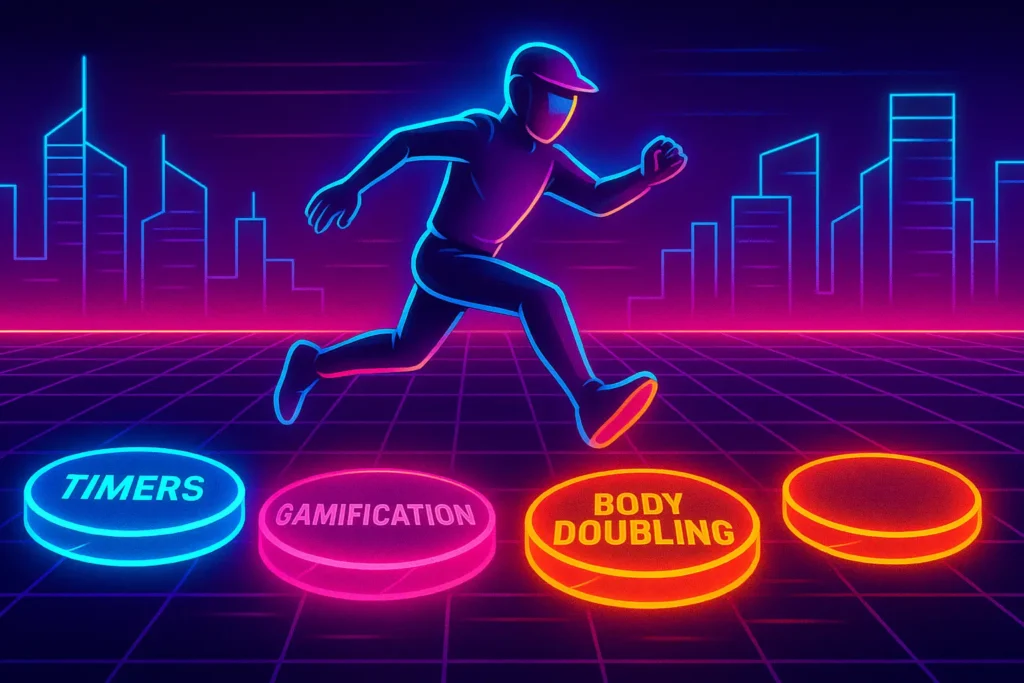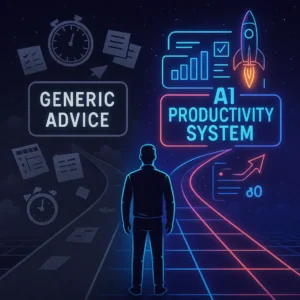Living with Attention Deficit Hyperactivity Disorder (ADHD) presents unique challenges when it comes to maintaining focus and attention. Whether you’re an adult struggling with work tasks or a parent wondering how to help a child with ADHD focus in school, finding effective strategies is essential for success. The good news is that learning how to focus with ADHD is possible through various techniques, environmental adjustments, and lifestyle changes tailored to your specific needs.
Understanding Focus Challenges with ADHD
Before diving into solutions, it’s important to understand why focusing is difficult for people with ADHD. The condition affects the brain’s executive functions, which control attention regulation, working memory, and impulse management. This means that knowing how to focus with ADHD requires addressing these underlying neurological differences.
For many, the challenge isn’t an inability to focus but rather inconsistent focus. People with ADHD often experience either hyperfocus (intense concentration on interesting activities) or significant difficulty maintaining attention on less stimulating tasks. Learning how to focus better with ADHD without medication means working with these natural tendencies rather than against them.
Research from the Journal of Attention Disorders shows that understanding your unique ADHD brain wiring is the first step to developing effective strategies. Instead of trying to force yourself into neurotypical approaches that don’t work, successful ADHD management involves identifying your specific challenges and designing personalized solutions.
Read More: Men with Adult ADHD
Finding Your Personal Focus Strategy with AI
The most effective ways to focus with ADHD are ones that match your unique brain wiring, preferences, and specific challenges. While general advice is helpful, personalization is key to breakthrough success.
You can use AI to analyze your specific ADHD focus patterns and design custom strategies. This approach can significantly reduce the frustration of trying generic solutions that don’t address your particular needs.
AI Prompt To Copy/Paste:
“I need help identifying my ADHD focus patterns. Please act as a focus strategy consultant to help me understand my unique challenges and develop personalized solutions.
Please guide me through this process step by step, waiting for my response before moving to each next stage:
Step 1: Identifying My Focus Patterns
- When do you typically find it easiest to focus? (Time of day, environment, type of task) a. Example: “I focus best in the morning in quiet environments on creative tasks.”
- What types of tasks or situations make focusing most difficult for you? a. Example: “I struggle with repetitive administrative tasks, especially in the afternoon.”
- When you do lose focus, what typically draws your attention away? a. Example: “I often get distracted by notifications, random thoughts, or visual movement.”
Step 2: Analyzing Your Current Approaches
- What strategies have you already tried to improve your focus?
- Which ones helped even a little, and which ones didn’t work at all?
- Do you notice any patterns in what has been most effective for you?”
This personalized assessment helps identify your unique focus challenges and strengths, creating a foundation for the strategies that follow.
Environmental Strategies to Stay Focused with ADHD
One of the most effective ways to focus with ADHD involves optimizing your environment to reduce distractions and increase attention cues.
For Adults:
- Create a distraction-free zone: Designate a specific area solely for focused work, free from visual clutter and noise.
- Use sensory tools strategically: Noise-canceling headphones, background music without lyrics, or white noise can create an optimal auditory environment.
- Implement time blocks: The Pomodoro Technique (25 minutes of work followed by 5-minute breaks) can be particularly effective for the ADHD brain.
- Enhance visual cues: Use color-coding, visual timers, and prominent reminders to keep your attention anchored to the current task.
For Children:
Parents wondering how to get a child with ADHD to focus without medication should consider these environmental adjustments:
- Design a dedicated homework station: A consistent, organized space signals that it’s time to focus and minimizes distractions.
- Reduce sensory overload: Keep the study area clean with minimal decorations and consider using room dividers in shared spaces.
- Incorporate movement options: Standing desks, wiggle cushions, or approved fidget tools can help channel excess energy.
- Create visual schedules: Clear, pictorial representations help children understand expectations and transitions.
Teachers seeking how to help a child with ADHD focus in school might implement:
- Strategic seating arrangements: Placing the student near the teacher and away from high-traffic areas or windows.
- Movement integration: Building in regular opportunities for legitimate movement during lessons.
- Visual supports: Using color, illustrations, and graphic organizers to make information more engaging.
- Transition warnings: Providing clear signals before switching activities reduces anxiety and improves focus.
Body-Based Approaches to Enhance Focus
Physical strategies are powerful ways to focus with ADHD because they directly address the brain’s need for activation and regulation:
- Regular exercise: Even 20 minutes of moderate activity can increase dopamine and norepinephrine, improving focus for 2-3 hours afterward.
- Sleep optimization: Creating consistent sleep routines can significantly improve executive function, with research showing even one hour of additional sleep enhances attention by up to 30%.
- Nutritional support: Balanced meals emphasizing protein, complex carbohydrates, and omega-3 fatty acids provide sustained energy for the brain.
- Hydration awareness: Maintaining proper hydration is crucial, as even 2% dehydration can impair cognitive performance by up to 13%.
For those exploring how to focus with ADHD without medication, these physical approaches are particularly important. While medication is effective for many, these strategies can complement pharmacological treatment or provide alternatives when medication isn’t desired or possible.
Cognitive Techniques to Stay Focused
Learning how to stay focused with ADHD often involves specific mental strategies that externalize the executive function load:
- Task prioritization systems: Using visual matrices like the Eisenhower Box to identify which tasks truly need attention first.
- Micro-tasking: Breaking complex projects into the smallest possible action steps (smaller than you initially think necessary).
- Implementation intentions: Creating “if-then” plans that specify exactly when and where you’ll work on specific tasks.
- Interest boosting: Finding ways to make boring tasks more engaging by adding challenge, novelty, or personal meaning.
Children benefit from similar strategies, adapted to their developmental level. Parents wondering how to get a child with ADHD to focus without medication might implement:
- Visual task analysis: Creating picture-based guides showing each small step of a routine or homework assignment.
- Gamification: Turning mundane tasks into engaging challenges with points, timers, or small rewards.
- Choice architecture: Structuring limited choices that give children agency while maintaining necessary boundaries.
- Strength-based approaches: Leveraging the child’s natural interests to build focus skills that transfer to other areas.
Read More: Abundance vs Scarcity mindset
Technology as a Focus Tool
While technology can be distracting, specific tools can actually help people learn how to focus better with ADHD:
- Focus applications: Tools like Forest, Focus@Will, or Brain.fm use neuroscience principles to enhance sustained attention.
- External brain systems: Digital organization platforms like Notion, Trello, or Todoist compensate for working memory challenges.
- Distraction blockers: Apps like Freedom, Cold Turkey, or Focus Bear temporarily restrict access to digital temptations.
- Automated reminders: Location or time-based alerts that prompt specific actions without taxing working memory.
For students, assistive technology can transform how to help a child with ADHD focus in school:
- Text-to-speech and speech-to-text tools: Reduce the cognitive load of reading and writing tasks.
- Digital organizational systems: Help track assignments and deadlines without relying on memory.
- Smart study tools: Applications like Quizlet or Kahoot make review more engaging and effective.
- Attention monitoring: Some apps can gently remind students when their attention drifts, building self-awareness.
Social Support Strategies
Support from others is one of the most underutilized ways to focus with ADHD:
- Accountability partnerships: Regular check-ins with someone who understands your challenges and can provide non-judgmental support.
- Body doubling: Working alongside someone else (in person or virtually) to leverage the social brain’s focusing power.
- Skill-specific coaching: Working with someone specifically trained in ADHD-friendly approaches to organization and focus.
- Community connections: Joining groups where others share similar challenges and successful strategies.
For children, social support is equally important when considering how to help a child with ADHD focus in school:
- Peer modeling: Strategic partnerships with organized classmates for specific activities.
- Teacher-student communication systems: Brief, regular check-ins that keep students on track without drawing negative attention.
- Home-school coordination: Consistent systems across environments reinforce focus strategies and reduce transition difficulties.
- Success teams: Building a network of supportive adults who understand the child’s specific needs and strengths.
Mindfulness and Self-Awareness
Developing mindfulness is a powerful approach for how to stay focused with ADHD, with research showing regular practice can actually strengthen attention networks in the brain:
- Brief mindfulness practices: Even 5-minute sessions can build the “attention muscle” over time.
- Meta-attention training: Learning to notice when your focus shifts and gently redirecting it without self-criticism.
- Mindful transitions: Creating brief mental resets between activities to reduce attention residue.
- Self-compassion practices: Recognizing that attention will naturally fluctuate and planning accordingly.
Read More: 100 Things to Be Grateful for
Conclusion: How to Focus with ADHD without Medication
Learning how to focus with ADHD isn’t about finding one perfect solution—it’s about building a personalized system of strategies that work for your unique brain. The most successful approaches combine environmental adjustments, physical optimization, cognitive techniques, technological tools, social support, and mindfulness practices.
Remember that progress often comes gradually, and setbacks are a natural part of the process. The goal isn’t perfect focus but rather finding sustainable ways to focus with ADHD that allow for success in school, work, and life.
For those seeking a more comprehensive, guided approach to overcoming ADHD focus challenges, the Habits Coach AI system offers a gamified, science-based platform that makes building attention skills simple, fun, and rewarding. By transforming traditional approaches to habit formation into an engaging journey tailored to your unique needs, it helps you build unstoppable momentum across all areas of life—including your ability to focus when it matters most.






